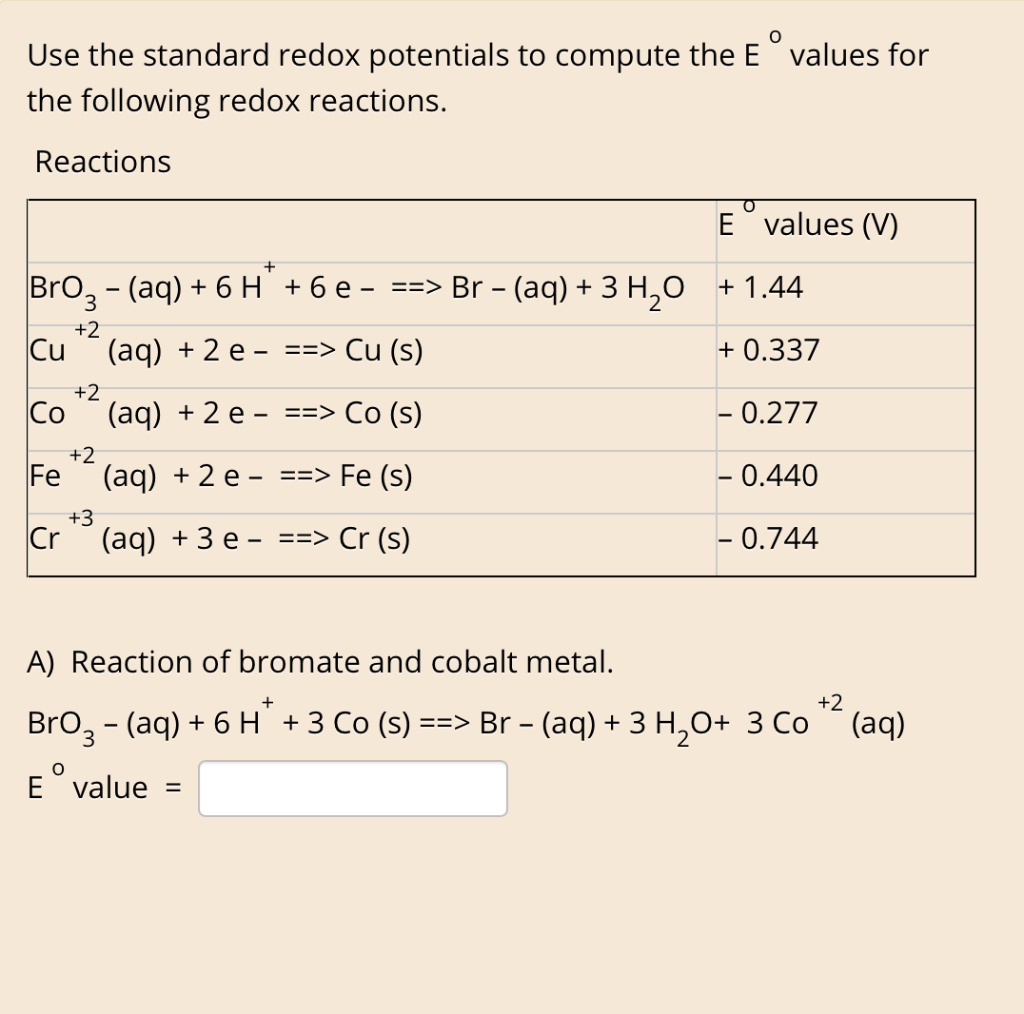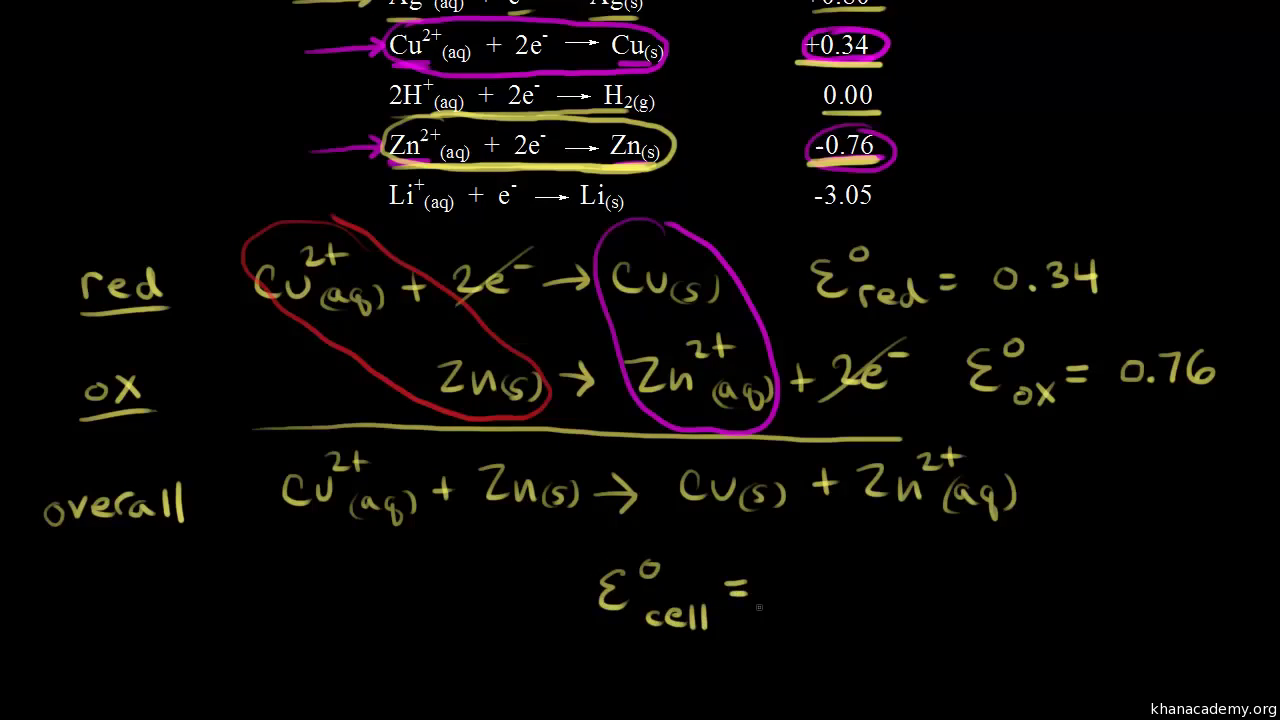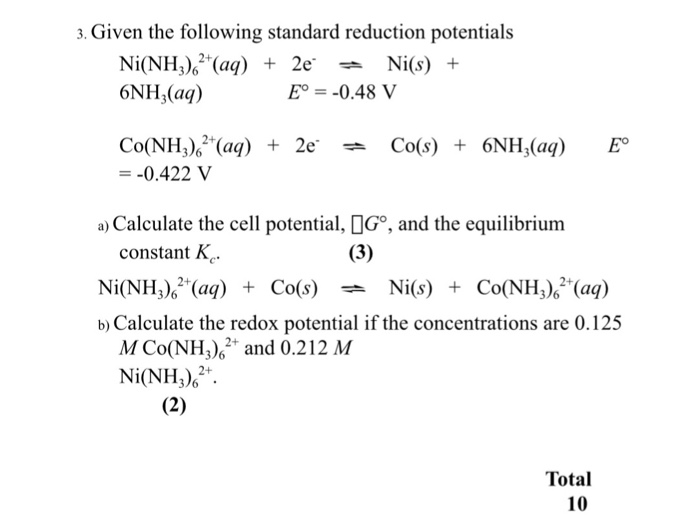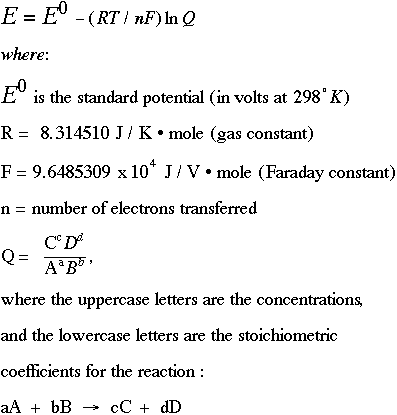
Standard reduction potentials | Redox reactions and electrochemistry | Chemistry | Khan Academy - YouTube
![The standard reduction potential for Cu^2 + /Cu is + 0.34 V. What will be the reduction potential at pH = 14 ? [Given: Ksp of Cu(OH)2 is 1.0 × 10^-19] . The standard reduction potential for Cu^2 + /Cu is + 0.34 V. What will be the reduction potential at pH = 14 ? [Given: Ksp of Cu(OH)2 is 1.0 × 10^-19] .](https://dwes9vv9u0550.cloudfront.net/images/8469704/978f411d-2ca9-41b2-ac30-64ae7a891629.jpg)
The standard reduction potential for Cu^2 + /Cu is + 0.34 V. What will be the reduction potential at pH = 14 ? [Given: Ksp of Cu(OH)2 is 1.0 × 10^-19] .

SOLVED: Use the standard redox potentials to compute the E values for the following redox reactions. Reactions values BrO3 (aq) + 6 H +6 e - ==> Br - (aq) + 3

Given standard electrode potentials: Fe^3 + + 3e^-→ Fe;E^0 = - 0.036V Fe^2 + + 2e^-→ Fe;E^0 = - 0.440V The standard electrode potential E^o for Fe^3 + + e^ - → Fe^2 + is:

Absolute Potential of the Standard Hydrogen Electrode and the Problem of Interconversion of Potentials in Different Solvents | The Journal of Physical Chemistry B

Standard Reduction Potentials for Oxygen and Carbon Dioxide Couples in Acetonitrile and N,N-Dimethylformamide | Inorganic Chemistry

Cell Potential & Gibbs Free Energy, Standard Reduction Potentials, Electrochemistry Problems - YouTube


:max_bytes(150000):strip_icc()/Standardreductionpotential-5b551731c9e77c003ec223b3.jpg)












